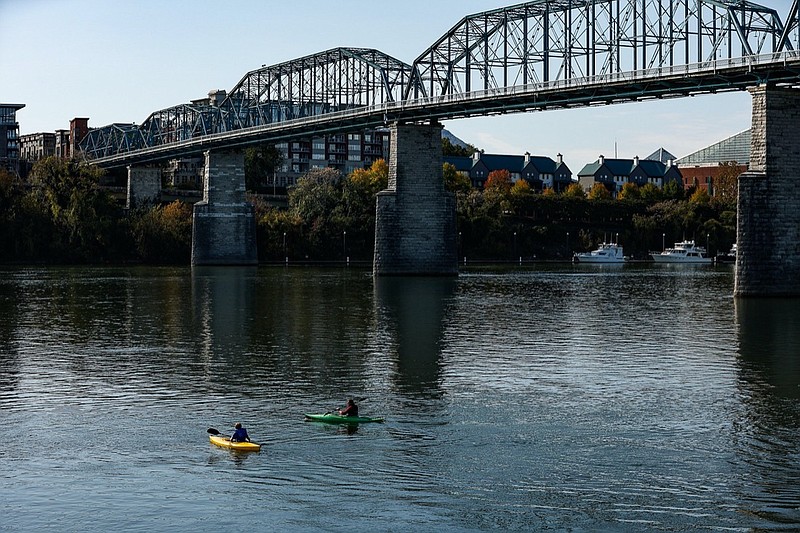Tennessee has more paddling fatalities than almost any other state - with the majority of accidents occurring on flatwater rivers and lakes, according to an American Canoe Association study of U.S. Coast Guard statistics.
In 2020, Tennessee saw 32 fatalities - a 37-year high - which tied Tennessee with Arkansas for the most paddling-related deaths that year. The increase is likely a result of the pandemic-fueled outdoor boom, officials say. And accidents are on the rise nationwide.
"It's easy to fall in love with paddling," says Erik Hancock, Outdoor Chattanooga customer relations specialist and Paddle Smart class instructor. "People get really excited about it and end up putting themselves into situations above their skill level."
Lakes may seem like the best option for beginners, he says, but they have their own hazards, such as traffic from motorized watercraft.
"Another issue," Hancock says, "on large bodies of water, you can be further from shore and the water can be deeper, so if you capsize, you can't just stand up."
"A properly fitted life vest is your first line of defense," says Cassie Singleton, Downtown Family YMCA aquatics director. "If you fall in, you need to roll onto your back, get your head above water and float."
Here, Singleton and Hancock share more tips for safe paddling this summer.
Three common mistakes to avoid
1. Not wearing the right-sized life vest.
Your life vest should be snug against your body. When you tug up on the shoulder straps, they should not lift above your earlobes. If they do, the life vest is too loose or too large, and that can create a choking hazard.
Pro tip: "Find a life vest that is coast-guard approved, and check the tag for weight limit," Singleton says. "You can find them at most sporting goods stores."
2. Paddling alone.
Bring a friend, or at very least, text a friend your float plan including a description of your boat, a description of the equipment you're carrying, where you expect to be and when you expect to be there.
3. Not being familiar with the waterway.
When planning to paddle the Tennessee River or any of its lakes, familiarize yourself first with the Tennessee Valley Authority website, where you can check water levels and dam release schedules.
Paddler's Checklist
While gear and planning will vary depending on your paddling trip, this checklist, which Hancock shares with his Paddle Smart students, will cover your bases for an afternoon on the water. Just make sure you tick all the boxes.
> Float plan
> Weather check
> Water level check
> Life vest
> Spare paddle
> Sun hat and sunscreen
> Navigation equipment (compass or GPS-enabled device)
> Whistle
> Appropriate clothing, multiple layers (remember, no cotton)
> Bilge pump
> Water and snacks
Learn more
Don't underestimate the potential hazards of flatwater. Both Hancock and Singleton recommend taking a water safety class to mitigate risk.
Outdoor Chattanooga's Paddle Smart classes take place at Chester Frost Park. Students can bring their own gear, or gear is available to rent. Lessons include everything from how to load and carry your boat to basic rescue techniques such as re-entering your boat in the event of a capsize.
See the schedule of classes at outdoorchattanooga.com.
For swimming instruction, contact Downtown Family YMCA at 423-266-3766 or ymcachattanooga.org.
"We offer lessons yearround for all ages," Singleton says. "The sooner you get your kids swimming, the better equipped they'll be in the future."
